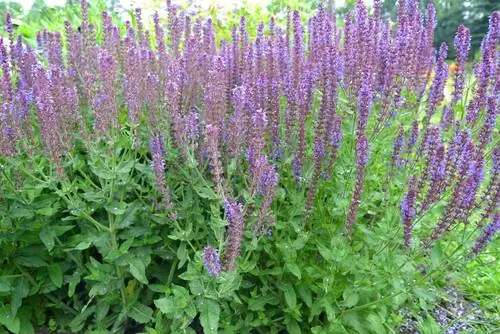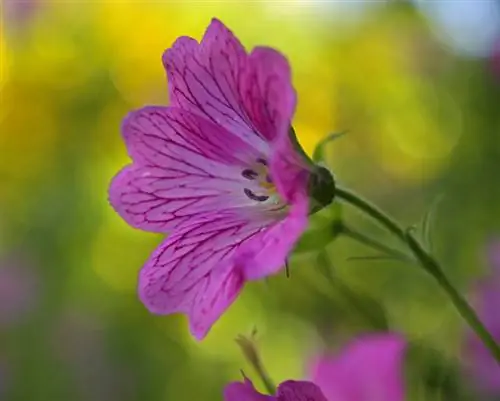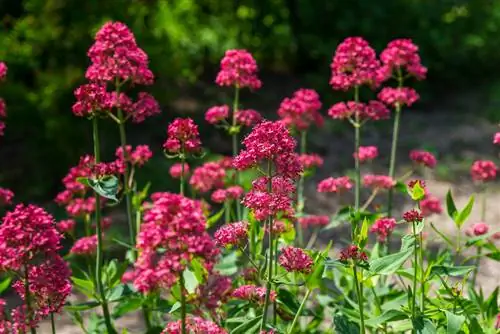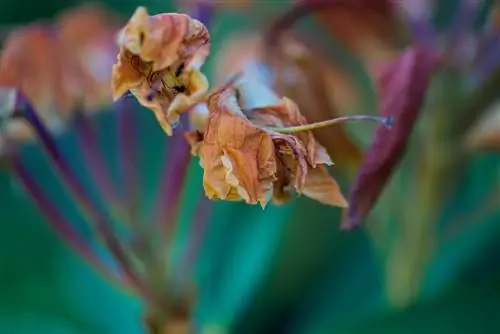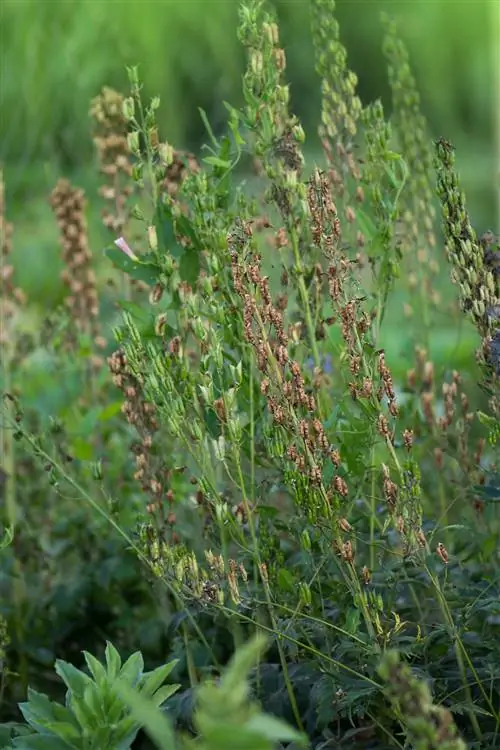- Author admin [email protected].
- Public 2024-01-05 20:48.
- Last modified 2025-01-23 11:21.
Ornamental sage, with its decorative flower candles, is an eye-catcher in the garden. If these have faded, cutting the plant can lead to a second flowering period. Targeted cutting is one of the general care measures that, if carried out correctly, have a positive effect on the growth of the ornamental sage.
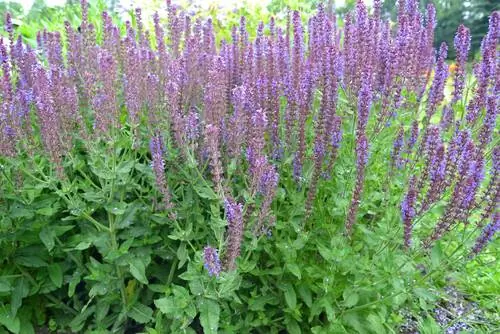
When and how should you cut ornamental sage?
To cut the ornamental sage, remove spent inflorescences in summer after the first flowering for a second flowering phase in autumn. A radical pruning is ideally carried out in spring, with all shoots shortened to around 15 cm, while woody shoots should be pruned less.
Preparations for pruning
Before you attack the plant with knives or scissors, you should make sure that you have the right tools. Of course, it depends on the thickness of the stems to be cut as to whether a knife is sufficient or whether it is better to use rose scissors. In any case, the scissors or knives must be very sharp so that smooth cutting surfaces are created and the plant stems are not bruised become. Before the first cut, the blades should be disinfected. This prevents the spread of diseases.
Select the cutting measure
There are two options when pruning ornamental sage:
- Removal of spent inflorescences for a second flowering
- the radical pruning
Cut the inflorescences
If the flower candles have faded and are already a little dry, you can easily cut them out. This measure results in a second flowering in autumn. Cutting after the first flowering period prevents seed formation. On the one hand, this protects the plant's strength and, on the other hand, it prevents the ornamental sage from spreading uncontrollably. If you want the plant to go wild in certain areas of the garden, one or two inflorescences can be left for the seeds to ripen.
Radical cutting
With this measure, all shoots are shortened to around 15 cm. Woody shoots should not be pruned or only pruned a little, because the sage does not tolerate cutting into the “old wood” very well. Such a radical intervention is best carried out in spring, giving the plant the opportunity for vigorous new growth.
When is the best time to prune ornamental sage?
As a rule, ornamental sage tolerates pruning all year round. However, larger cutting measures should be carried out at a certain time. The spent inflorescences are cut in summer, i.e. after the first flowering, so that a second flowering phase can take place in autumn. Here, too, you cut after flowering if you want to prevent seeds from forming.
A radical cut, however, is best done in early spring so that the plant can sprout well. With hardy sage plants, the old, dried shoots are the best protection against the cold in winter.

